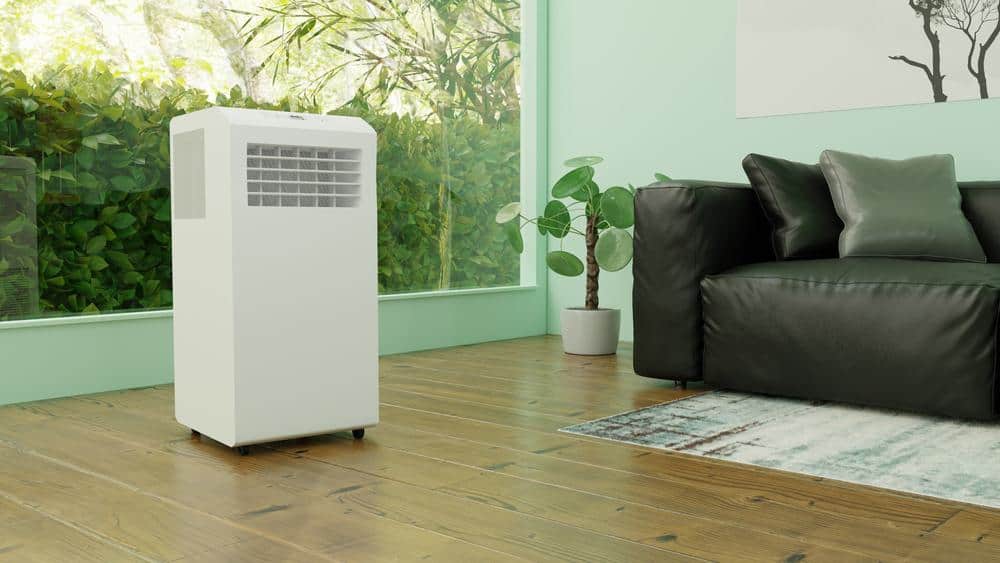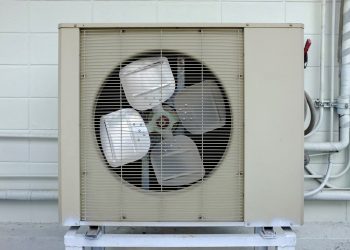
The BTU, or British Thermal Unit, is a measure of thermal energy. Specifically, one BTU represents the amount of energy needed to raise the temperature of one pound of water by one degree Fahrenheit at sea level. In the world of HVAC — heating, ventilating, and air conditioning — BTUs measure the amount of heat an air conditioning unit can remove from a room per hour.
BTU, or British Thermal Unit, in a portable AC refers to the amount of heat the air conditioner can remove from a room per hour. The higher the BTU rating, the more powerful the air conditioner is. In simple terms, a portable AC unit with a higher BTU can cool a larger room more effectively than one with a lower BTU. Therefore, understanding the BTU requirement for your space is crucial for efficiency, energy usage, and comfort.
Understanding BTUs in Portable AC Units
When it comes to portable air conditioners, the BTU rating is indicative of the unit’s cooling capacity. Simply put, the higher the BTU rating, the more powerful the air conditioner is. A higher BTU AC unit can cool a larger room more effectively than a lower BTU unit.
For example, a portable AC unit with a rating of 8,000 BTUs is typically capable of cooling a room of around 200 square feet (assuming a standard 8-foot ceiling). On the other hand, a unit with a rating of 14,000 BTUs could cool a room of about 500 square feet under the same conditions.
Why BTU Matters
Selecting a portable air conditioner with the appropriate BTU rating for your space is crucial for a few reasons:
Efficiency: An AC unit with too high of a BTU rating will cool the room quickly but may not effectively remove humidity, leaving the room feeling damp and clammy.
Energy Usage: On the other hand, a unit with too low of a BTU rating will struggle to cool the room and will use more energy in the process, resulting in higher electricity bills.
Comfort: Lastly, a unit with the right BTU rating will cool your room efficiently and effectively, providing a comfortable living or working environment.
Calculating the Right BTU for Your Space
To calculate the BTU requirement for your room, you’ll first need to know the square footage. You can calculate this by measuring the length and width of the room in feet and multiplying these two numbers together.
Once you have the square footage, multiply this number by 25 to get a rough estimate of the BTU requirement. This calculation assumes that you’ll need roughly 25 BTUs per square foot of living space.
For example, if your room is 20 feet long and 15 feet wide, the square footage is 300 square feet. Multiplying this by 25 gives you a BTU requirement of 7,500. So, you’d need a portable AC unit with a BTU rating of around 7,500.
Adjusting BTU Estimates
While this calculation provides a good starting point, several factors might require you to adjust your BTU estimate:
Sunlight: If your room receives a lot of sunlight, you might need a higher BTU rating. On the contrary, if your room is heavily shaded, you might be able to reduce the BTU rating.
Occupants: If more than two people regularly occupy the room, you should add 600 BTUs for each additional person.
Kitchen: If the room you’re cooling is a kitchen, add 4,000 BTUs to the calculated amount due to heat generated from cooking appliances.
Ceiling Height: Rooms with high ceilings may require more cooling capacity and thus a higher BTU rating.
BTU and Energy Efficiency
It’s also worth noting that a higher BTU rating doesn’t necessarily mean the unit is more energy efficient. The Energy Efficiency Ratio (EER) measures an air conditioner’s energy efficiency. You can calculate the EER by dividing the BTU rating by the unit’s wattage. Higher EER values indicate a more energy-efficient unit.
Conclusion
In conclusion, understanding BTUs and how they relate to the cooling capacity of a portable AC unit is crucial in selecting the right air conditioner for your space. By considering the factors mentioned above, you can ensure you’re choosing a unit that will cool your space efficiently and effectively, all while keeping energy usage to a minimum.
For more detailed and personalized advice, it’s always a good idea to consult with an HVAC professional. They can perform a detailed load calculation to determine the exact BTU requirement for your specific room or area.
Frequently Asked Questions
What is the difference between a window AC and a portable AC in terms of BTU?
Both window and portable AC units use BTUs to measure their cooling capacity. However, because portable AC units are less efficient at cooling due to their design (they often have to vent hot air through a duct), they typically require a higher BTU rating than window units to cool the same sized space.
Can I use a portable AC with a higher BTU rating than recommended for my room size?
Yes, you can use a portable AC with a higher BTU rating than recommended for your room size. However, this may result in the unit frequently turning on and off, leading to increased energy consumption and potentially a less comfortable environment due to inadequate dehumidification.
Does the BTU rating affect the noise level of the AC unit?
The BTU rating itself does not directly affect the noise level of the AC unit. However, higher BTU units often have larger compressors and fans, which can generate more noise. It’s always a good idea to check the noise level (measured in decibels, dB) specified by the manufacturer before purchasing.
How often should I adjust the BTU estimate for my room?
You should adjust the BTU estimate whenever there’s a significant change in the room conditions that may affect cooling needs, such as increased occupancy, changes in the amount of sunlight the room receives, or if the room usage changes (e.g., from a living room to a kitchen).
Can I use multiple smaller BTU units to cool a large room instead of a single larger BTU unit?
Yes, you can use multiple smaller BTU units to cool a large room. This can provide more even cooling and allow for better control of the temperature in different parts of the room. However, this may be less energy efficient than using a single larger BTU unit.












